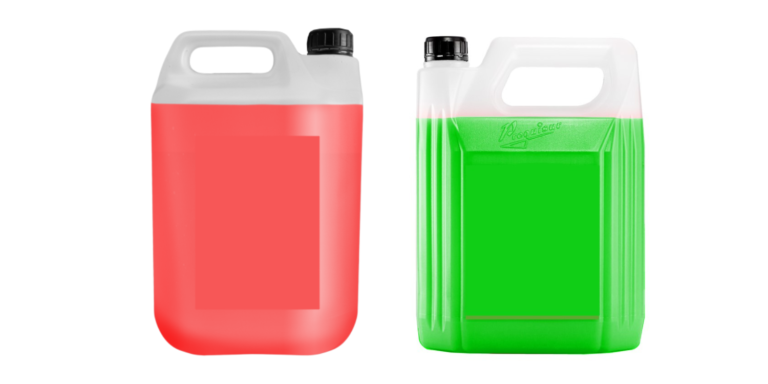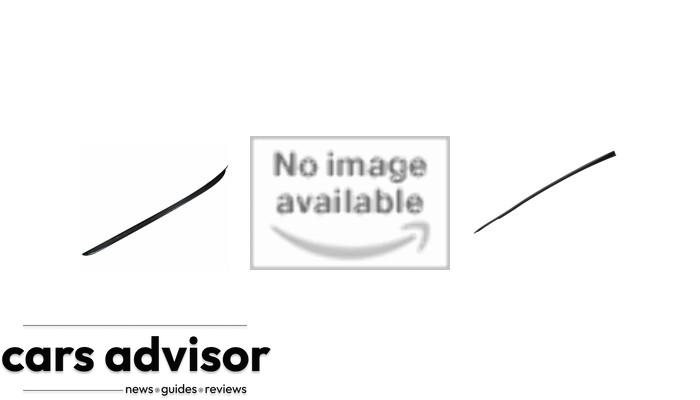Have you ever noticed your 5.7 Hemi’s oil pressure dropping at idle and wondered if it’s a cause for concern? Some RAM 1500 drivers with this engine configuration have experienced these issues, which can result from a variety of factors such as clogged oil filters or low oil levels.
In this blog post, we’ll dive deep into the causes of low oil pressure in your engine and provide helpful tips on troubleshooting and prevention to ensure optimal performance.
Understanding The 5
To properly diagnose and fix low oil pressure issues in a 5.7 Hemi engine, it’s essential to have a sound understanding of the engine’s oil system components, including the oil filter, pump, and lubrication system, as well as the vital role of maintaining proper oil pressure for optimal engine performance.
Components Of The Oil System
The 5.7 Hemi engine oil system is designed to provide proper lubrication and protection for the engine’s internal components. Understanding the various components of this system can help you spot potential issues and address them accordingly. Here are the main parts of the oil system in a 5.7 Hemi:
- Oil Pump: Responsible for circulating oil throughout the engine, maintaining adequate oil pressure.
- Oil Pan: Holds the engine oil and allows it to be drawn into the pump.
- Oil Pickup Tube: Connects the pump to the pan, enabling it to draw in oil from the bottom of the pan.
- Pressure Relief Valve: Regulates excess pressure within the system, keeping it within a safe range.
- Oil Filter: Cleans contaminants from engine oil as it circulates, ensuring only clean oil reaches vital engine components.
- Main Bearings: Allows smooth rotation of the crankshaft within the engine block while being lubricated by pressurized oil from pump/filter assembly.
- Connecting Rod Bearings: Provides smooth movement between connecting rods and crankshaft, with a constant supply of clean pressurized oil for proper lubrication.
- Camshaft Bearings: Allows camshafts to function smoothly with appropriate lubrication as they control valvetrain operation.
- Hydraulic Lifters/Tappets: Self-adjusting mechanisms that maintain proper valvetrain clearances by using pressurized oil from pump/filter assembly.
- Oiling Passages (Galleries): Internal channels within an engine that distribute pressurized oil to all lubricated components.
By familiarizing yourself with these key components, you can better understand how your vehicle’s oil system operates and identify possible causes behind any unexpected drop in idle pressure or other related problems you may encounter during its use or maintenance.
Importance Of Oil Pressure
As a 5.7 Hemi owner, it’s important to understand the significance of oil pressure in your engine’s performance. Oil pressure is essential in ensuring that every moving part within the engine is adequately lubricated and protected from friction and wear.
Low oil pressure at idle is a common problem experienced by some 5.7 Hemi owners, with possible causes ranging from clogged oil filters to worn-out internal engine components.
In summary, maintaining optimal oil pressure levels ensures long term stability for all crucial elements of an internal combustion engine like your 5.7 Hemi-powered Dodge Ram or Challenger while also maximizing performance and efficiency during operation no matter what RPM you’re running at .
Causes Of Oil Pressure Drops At Idle
As mentioned, there are several reasons why the oil pressure may drop at idle on a 5.7 Hemi engine. One of the most common causes is clogged oil filters, which can restrict oil flow and reduce pressure.
This can occur when the filter becomes dirty or experiences a buildup of debris over time.
In addition to these issues, using the wrong viscosity of motor oil for your specific engine requirements could be another culprit behind reduced pressure.
A worn-out or defective oil pump also plays a part in causing low-pressure problems during idling.
Overall, monitoring your vehicle’s performance metrics by regularly checking its vitals such as fluids levels and quality filter replacements while following manufacturer maintenance schedules are great ways you can prevent drops in power output due to variations in Oil Pressure ranges during idling on your Dodge Ram with 5 7 Hemi engines among others.
Troubleshooting 5
To troubleshoot 5.7 Hemi oil pressure problems, it’s important to check the oil levels and quality, inspect the oil filters and pressure sensor, as well as examine the overall condition of the engine components like the pump.
Checking Oil Levels And Quality
To prevent drops in oil pressure at idle, it is important to regularly check the oil levels and quality. Here are some steps to follow:
- Park the vehicle on a level surface and turn off the engine.
- Wait a few minutes for the oil to settle before checking the oil level with the dipstick.
- Ensure that the oil level is within the recommended range for your specific 5.7 Hemi model, as indicated in your owner’s manual or service guide.
- If the oil level is low, add enough high-quality engine oil of the recommended viscosity to bring it up to the appropriate level.
- Check for any signs of contamination or debris in the oil, which may indicate an issue with internal engine components or a clogged oil filter.
- Consider having an oil analysis done to assess the quality of your engine oil and identify any potential issues.
Regularly monitoring your 5.7 Hemi’s oil level and quality can help prevent drops in pressure at idle caused by low levels or poor-quality engine oil.
Inspecting Oil Filters
As someone who regularly maintains my 5.7 Hemi engine, I know how important it is to inspect the oil filters to prevent oil pressure drops at idle. Here are some steps to take when inspecting oil filters:
- Remove the old filter: Use a wrench to remove the old filter and drain the oil from it.
- Inspect the filter: Check for any signs of damage or clogs in the filter. Look for debris, metal shavings, or dirt that may have accumulated.
- Check the valve: Ensure that the valve is functioning correctly and not stuck closed or open.
- Replace with a new filter: Install a new high-quality OEM or equivalent filter and tighten it to specifications.
- Change the oil: After replacing the filter, add fresh oil while checking for any leaks around the filter gasket or drain plug.
By inspecting and replacing your oil filters regularly, you can ensure proper engine lubrication, prevent low oil pressure issues at idle speeds, and maintain optimal engine performance over time. Always use high-quality filters that meet OEM specifications and change them according to recommended maintenance intervals or more frequently if driving in harsh conditions such as dusty roads or off-road adventures.
Checking The Oil Pressure Sensor
The oil pressure sensor is an essential component of the 5.7 Hemi engine’s oil system, responsible for monitoring the engine’s oil pressure. Here are the steps to follow when checking the oil pressure sensor:
- Locate the Oil Pressure Sensor – The sensor is usually near or below the oil filter mounting area.
- Inspect Sensor Electrical Connections – Check if there are any loose connections or damaged wires.
- Measure Voltage Output – Use a digital multimeter to check if there is any voltage output from the sensor when the engine is running at idle speed.
- Compare with Recommended Values – Cross-reference your voltage measurements with recommended voltage output values that can be found in your vehicle’s owner’s manual.
- Replace or Repair – If you detect any issues while conducting checks, replace or repair them.
By following these steps and ensuring that your oil pressure sensor is functioning properly, you can prevent low oil pressure in your 5.7 Hemi engine and avoid any potential damage to internal engine components caused by inadequate lubrication.
Inspecting The Oil Pump
One of the potential causes of low oil pressure in a 5.7 Hemi engine is a faulty or worn out oil pump. Here’s how to inspect this crucial component:
- Remove the oil pan and locate the oil pump.
- Check for any signs of wear or damage, such as cracks or scoring on the gears.
- Ensure that the pump is clean and free of debris.
- Check that the oil pump pickup screen is not clogged with dirt or metal fragments.
- Inspect the oil pump housing and cover for any dents, cracks, or distortion.
- Test the oil pressure relief valve to ensure it opens at the correct pressure range.
- If any issues are found during inspection, repair or replace the oil pump as needed.
It’s important to note that a malfunctioning oil pump can cause serious damage to internal engine components if left unaddressed, resulting in costly repairs or even engine failure. Regular maintenance and inspections can help prevent such issues from occurring in your 5.7 Hemi engine.
Prevention And Fixing Low Oil Pressure In The 5
To prevent and fix low oil pressure in the 5.7 Hemi, it’s crucial to follow a regular maintenance schedule and use high-quality engine components such as recommended oil viscosity and filters; learn more about how to keep your Hemi performing at its best by reading on!
Regular Maintenance And Oil Changes
As a 5.7 Hemi engine owner, I know that regular maintenance and oil changes are crucial for maintaining optimal oil pressure and engine performance. Here are some tips for keeping your engine in top shape:
- Follow the manufacturer’s recommended oil change schedule to ensure that the engine is receiving fresh, clean oil on a regular basis.
- Use the recommended oil viscosity and high-quality oil filters to maintain proper lubrication and prevent clogs in the system. Refer to your vehicle’s manual or consult with a trusted mechanic if you are unsure what type of oil or filter to use.
- Check your oil levels regularly, especially before long trips or during hot weather when engines tend to run hotter. Low oil levels can contribute to low pressure at idle.
- Keep an eye out for any signs of abnormal engine behavior, such as a knocking sound or poor acceleration. These symptoms could indicate internal engine damage that requires attention from a professional mechanic.
- Finally, make sure that you are operating your vehicle within its intended parameters. Avoid excessive idling or revving the engine unnecessarily as these actions can put undue stress on internal components and lead to premature wear.
By following these guidelines, you can help prevent low oil pressure and other potential issues from arising in your 5.7 Hemi engine.
Using The Recommended Oil Viscosity And High-Quality Oil Filters
The right viscosity ensures proper lubrication is maintained when the engine is hot or cold, preventing wear on internal components such as bearings, pistons, or camshafts.
High-quality oil filters are crucial in maintaining consistent oil pressure by removing contaminants from the system. Contaminants like dirt particles, metal slivers, and other debris can clog up the filter restricting flow through various parts of the engine.
The recommended viscosity for most 5.7 Hemi engines is usually 5W-20 or 0w-20 depending on your geographical location with high-quality OEM (original equipment manufacturer) or professional-grade aftermarket oil filters also suggested to maintain optimal performance levels while reducing wear on vital internal components.
By adopting these simple preventive measures discussed here – regular maintenance practices including regular changing of quality oils and filters will ensure that you get top-notch performance out of your Hemi-powered vehicle every single time!
Ensuring Proper Engine Operation
As a 5.7 Hemi engine owner, ensuring proper engine operation is crucial to maintaining healthy oil pressure levels. One way to do this is by avoiding aggressive driving habits that can put excessive strain on the engine’s internal components and cause unnecessary wear and tear.
Maintaining proper tire inflation levels can also impact your engine’s overall performance. Proper tire pressure reduces rolling resistance, which in turn reduces the load on the engine while driving.
This can help improve gas mileage and reduce wear on internal parts over time.
Repairing Or Replacing Worn Engine Components
If troubleshooting reveals that worn engine components are causing low oil pressure in your 5.7 Hemi engine, it’s vital to address the issue before further damage occurs. Here are some steps to take:
- Conduct a thorough inspection of the engine to identify all worn or damaged parts
- Replace any worn bearings, including main and rod bearings
- Repair or replace damaged or corroded cylinder walls
- Check the crankshaft for bends or cracks, repairing or replacing if necessary
- Inspect the camshafts and lifters for wear and damage; again, repair or replace as needed
- Replace damaged valve springs
- Inspect the oil pump drive system for damage
By taking these steps, you can restore your 5.7 Hemi engine to optimal performance and oil pressure levels. Remember that regular maintenance can help prevent these problems from occurring in the first place, so be sure to follow recommended service schedules for your vehicle.
Conclusion And FAQs
In conclusion, low oil pressure at idle can cause significant engine performance issues for 5.7 Hemi engines in Dodge Ram and Challenger vehicles. It is essential to understand the causes of low oil pressure and take preventative measures to maintain optimal engine health.
FAQs:
Q: What should be the minimum oil pressure at hot idle?
A: The minimum normal operating range for a hot idle is around 8-10 psi.
Q: Can low oil levels cause drops in oil pressure?
A: Yes, insufficient amounts of oil can have an adverse effect on your engine’s lubrication system and lead to decreased performance.
Q: Is it safe to drive with low oil pressure?
A: No, driving with consistently low or zero oil pressure may cause severe damage to internal components of your vehicle’s engine.
Q: Can changing the brand of motor oils impact my car’s performance?
A: Although rare cases do exist where two brands might not work well together due to additive products’ differences but switching between reputable brands typically doesn’t affect an automobile’s performance adversely.
Remember that keeping up-to-date on regular maintenance schedules will greatly help you avoid any unwanted complications regarding your vehicle’s overall health!


















